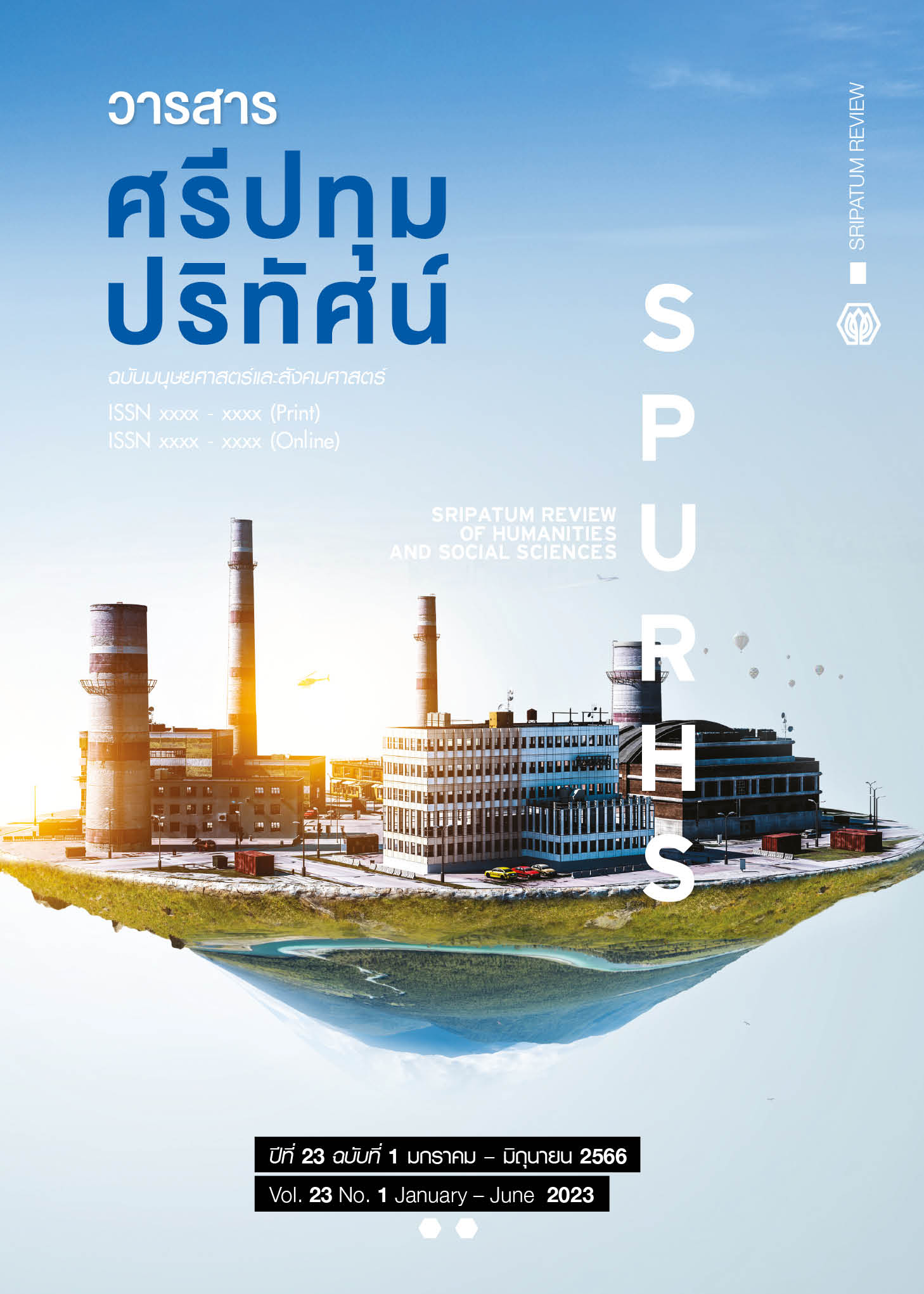The Relationship Between Tourists' Spa Use Behavior and Service Quality of Spa Businesses in Thailand.
Main Article Content
Abstract
The objectives of this study are 1) to investigate personal factors of the tourists, the tourist behavior, and spa service quality and 2) to study the relationship between tourists' spa service behavior and service quality of spa businesses in Thailand. The research aims to focus on the study of tourism behavior and the quality of spa business service. The scope of this study reveals that the researcher pays attention to the potential of spa service quality in Thai spa industry. There are four areas; Bangkok, Phuket, Pattaya (Chonburi), and Chiangmai. The research methodology is quantitative; questionnaires are constructed to collect the data from 400 Thai tourists. By using descriptive statistics such as percentage, mean, standard deviation and test the correlation with chi-square statistics. As a result of this study, (1) Thai tourists, are mostly female ageing between 30-39. These female tourists are mostly in professional and technician level. Their education is average in bachelor's degree earning 20,001 – 30,000 bath a month. Most of the participants are from central of Thailand. The main purpose of their travelling is to use spa service for relaxing and reducing stress. (2) According to the questionnaire, the targets rate spa service to the most satisfaction level. Responsiveness is significantly the most satisfied of spa service quality. Reliability, Tangibility, Empathy and Assurance are responded at the lower satisfaction level respectively, all were moderately correlated with the quality of spa services in Thailand.
Article Details

This work is licensed under a Creative Commons Attribution-NonCommercial-NoDerivatives 4.0 International License.
1. กองบรรณาธิการสงวนสิทธิ์ในการพิจารณาและตัดสินการตีพิมพ์บทความในวารสาร
2. บทความทุกเรื่องจะได้รับการตรวจสอบทางวิชาการโดยผู้ทรงคุณวุฒิ แต่ข้อความและเนื้อหาในบทความที่ตีพิมพ์เป็นความรับผิดชอบของผู้เขียนแต่เพียงผู้เดียว มิใช่ความคิดเห็นและความรับผิดชอบของมหาวิทยาลัยศรีปทุม
3. การคัดลอกอ้างอิงต้องดำเนินการตามการปฏิบัติในหมู่นักวิชาการโดยทั่วไป และสอดคล้องกับกฎหมายที่เกี่ยวข้อง
References
Buzzell, R.D. and Gale, B.T. (1987). The PIMS Principles Linking Strategy and Performance. New York: Free Press.
Chetchirarat, W. (2000). Quality of service. 4th edition. Bangkok: Technology Promotion Association of Thailand. (in Thai)
Department of Health Service Support. (2020). The vision to be a center of tourism Health (Medical & Wellness) in ASEAN. Bangkok: Ministry of Public Health.(in Thai)
Duangchan, S. and Khamkaen, N. (2014). Expectations for choosing health spa services and beauty. Suan Dusit Rajabhat University Research Journal, 11(3), 27-46. (in Thai)
Economic, Tourism and Sports Division. (2020). Trends in the number of tourists around the world. Bangkok: Tourism Authority of Thailand. (in Thai)
Kianwatana, K., Sukhontasap, S. and Lee Mingsawat, V. (2018). Situations, needs and trends of medical tourism in Thailand. Academic Journal of the Institute of Physical Education. 10(1), 167-177. (in Thai)
Khiaochuo, W. et al. (2018). Guidelines for the development of spa business potential in response to service expectation of foreign tourists Hua Hin District Prachuap Khiri Khan Province. Journal of Dusit Thani College. 12 (2),167-181. (in Thai)
Likert, R. (1967). The Method of Constructing and Attitude Scale: Attitude Theory and Measurement. Fishbeic, Martin, Ed. New York: Wiley & Son.
Limtaweesomkiat, A. (2020). Service quality that influences the decision to use Nail services Spa of Gen Y consumers in Bangkok. Bangkok. Graduate School, Srinakharinwirot University. (in Thai)
Maxwell, J. A. (1996). Qualitative Research Design: An Interactive Approach. Thousand Oaks, CA: Sage Publications.
Medical Association of Thailand. (2022). Health Tourist Behavior. [Online]. Retrieved 20 June 2022, from: https://www.mat-thailand.org. (in Thai)
Ministry of Tourism and Sports. (2021). Statistics of Thai tourists. [Online]. Retrieved 6 June 2022, from: https://secretary.mots.go.th/strategy/more_news.php?cid=9. (in Thai)
Parasuraman, A., Zeithaml, V. A., and Berry, L. L. (1988). SERVQUAL: A Multi-item Scale for Measuring Consumer Perception of Service Quality. Journal of Retailing, 64(1), 12- 40.
Parasuraman, Zeithaml, V.A., and Berry, L.L. (1990). A Conceptual Model of Service Quality and its implications for future research. Journal of Marketing, 49, 41-50.
Pongsathaporn, S. (2007). Service Marketing Tips. Bangkok: PC Printtake. (in Thai)
Sethi, T. (2019). Behaviors affecting perception of service image and expectation in the quality of spa and Thai massage services for foreign customers in Pattaya. Thesis of the Degree of Master of Business Administration. Chonburi: Burapha University. (in Thai)
Srisathitnarakul, B. (2010). Research Methodology: Guidelines for Success. 3rd edition. Bangkok: Chulalongkorn University Press. (in Thai)
Techakana, J., Chongsitjiphol, S. (2020). Tourist’s Satisfaction with Spa Services: A Case Study of the Eastern Region of Thailand. Naresuan University Journal: Science and Technology 2020, (28) 1. (in Thai)
Thonghom, T. (2015). Sustainable Tourism Management. Bangkok: Pattanakarn Office travel. (in Thai)
Wichitwanna, S. (2022). Relationship statistics: how to use. Journal of the Humanities and Social Sciences, 8(2), 1-15. (in Thai)
Wisher, J.D. and Corney, W.J., (2001). Comparing practices for capturing bank customer feedback–Internet versus traditional banking. Benchmarking: An International Journal, 8(3), 240-250.
Wongphan, C. and Wongmonta, S. (2022). Guidelines for using spa business to increase strength in being the destination of Chiang Mai tourism. Thesis of the Degree of Doctor of Philosophy Program in Tourism and Hospitality. Phaoyao: Phayao University. (in Thai)


